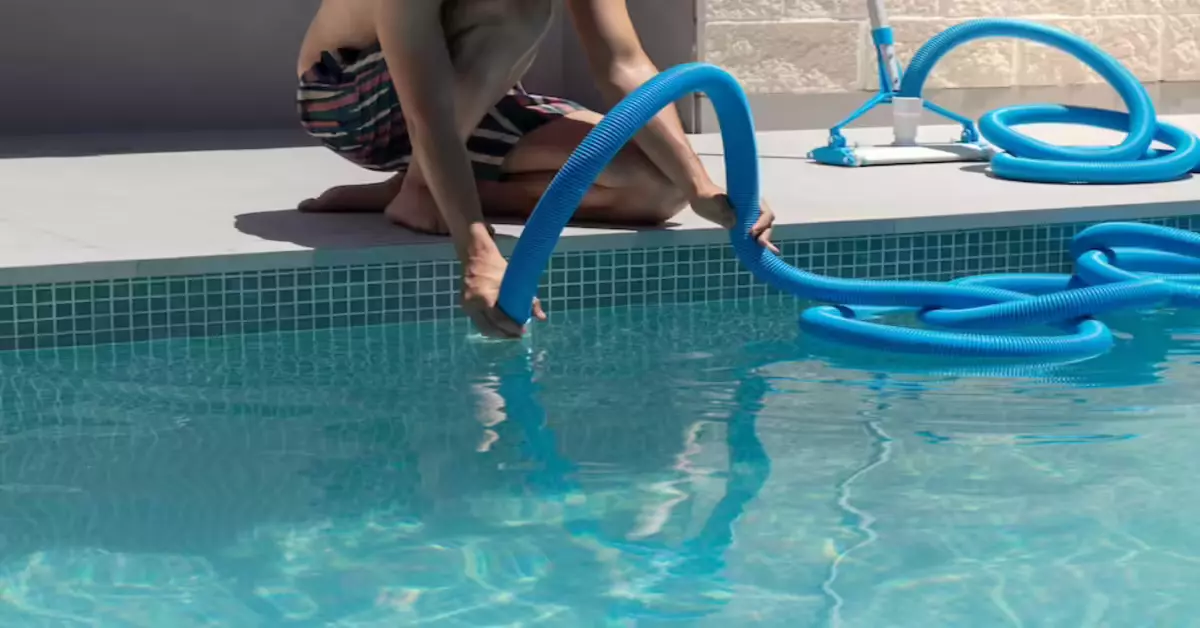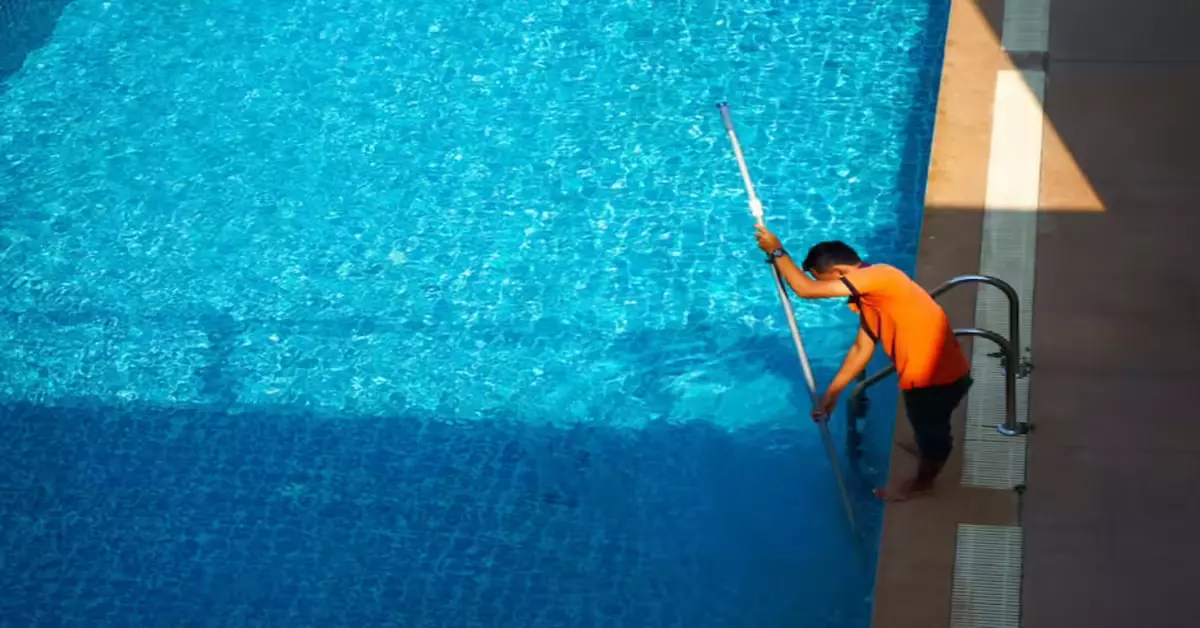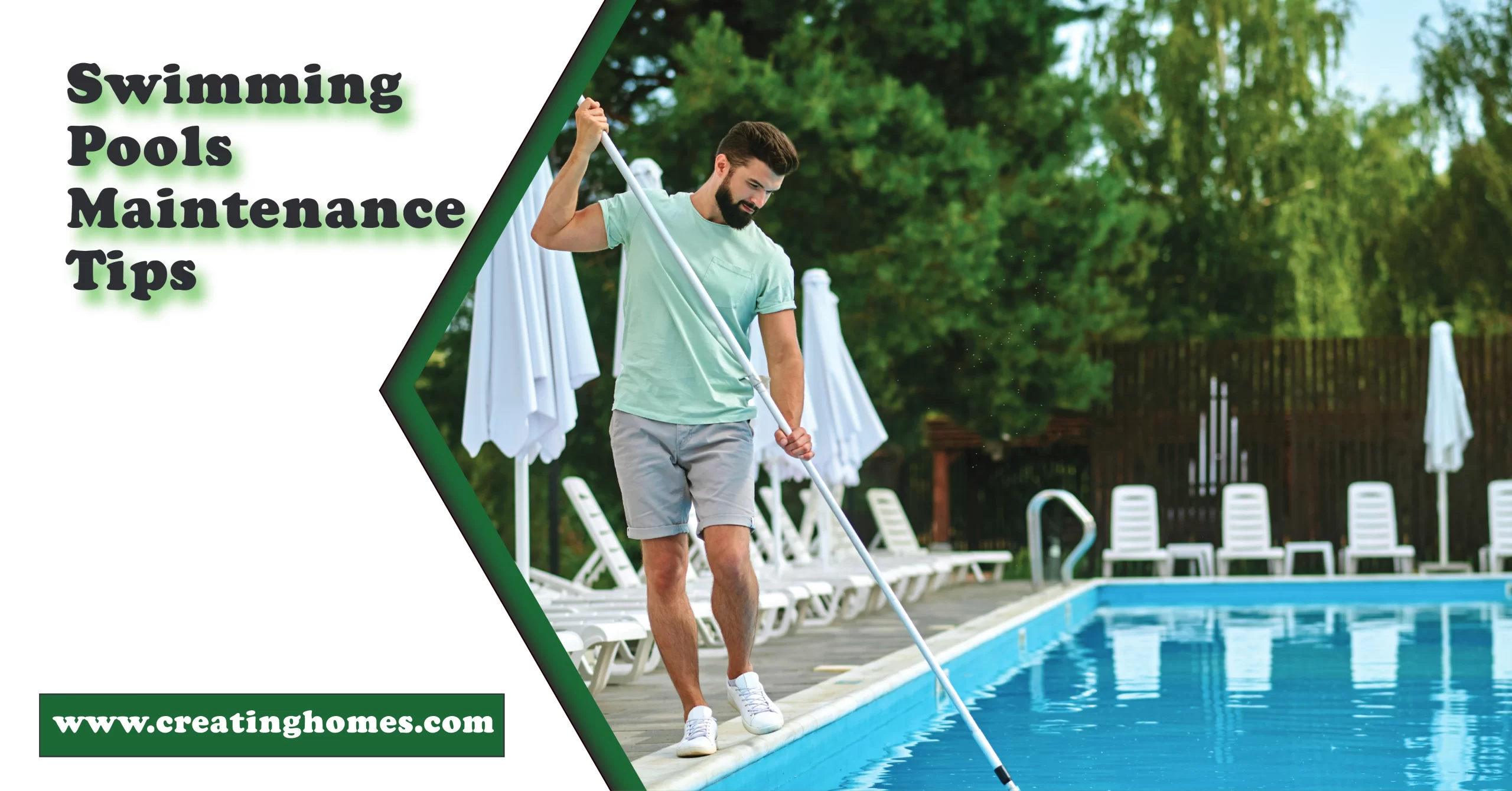When it comes to creating your oasis at home, nothing beats the refreshing allure of a swimming pool. However, maintaining this aquatic haven isn’t just about lounging by the water; it’s about ensuring its longevity and your safety. Proper pool maintenance is the cornerstone of preserving the pristine condition of your pool and ensuring a delightful swimming experience.
Importance of Proper Pool Maintenance
Maintaining your swimming pool isn’t merely an option; it’s a responsibility. Regular upkeep not only prolongs the life of your pool but also safeguards the health of those who swim in it. Proper maintenance prevents algae growth, bacterial infestations, and water imbalances that could pose health risks. Furthermore, it safeguards your investment by averting costly repairs or replacements.
Overview of the Blog Post Content
In this comprehensive guide, we’ll delve into every facet of swimming pool maintenance. From daily tasks to seasonal rituals, we’ll equip you with the knowledge and tips necessary to keep your pool crystal clear and inviting throughout the year. Here’s a sneak peek at what you’ll discover:
This blog post will cover essential tips and insights to ensure your pool stays in pristine condition. Moving on to the next section, I’ll detail the daily maintenance tasks needed to keep your pool sparkling clean.
 Understanding Pool Maintenance
Understanding Pool Maintenance
Embarking on a journey of smart home renovation opens doors to a seamless fusion of technology and modern living. In the realm of pool maintenance, this entails a harmonious blend of routine tasks and a deep understanding of its overarching significance. Let’s delve into the foundational aspects that underscore the effectiveness of maintaining a smart and sophisticated pool environment.
Daily, Weekly, and Monthly Maintenance Tasks
Daily Tasks
- Skimming and Cleaning: Remove leaves, debris, and any surface impurities using a skimmer net. This prevents them from sinking and affecting the pool’s cleanliness.
- Brushing and Vacuuming: Regularly brushing the walls and vacuuming the pool floor helps eliminate algae, dirt, and other particles that might accumulate.
Weekly Tasks
- Water Testing: Check the pool water’s pH levels, chlorine content, and alkalinity using a reliable testing kit. This ensures the water is balanced and safe for swimming.
- Shock Treatment: Administer a shock treatment to eliminate bacteria and algae buildup. This helps maintain water clarity and hygiene.
Monthly Tasks
- Equipment Inspection: Regularly inspect pool equipment such as pumps, filters, and heaters for any signs of wear or malfunction. Address issues promptly to prevent further damage.
- Deep Cleaning: Scrub the pool tiles and walls to prevent the buildup of stubborn stains and algae.
Benefits of Regular Pool Maintenance
Water Clarity and Safety
Regular maintenance ensures crystal-clear water, making it visually appealing and safe for swimming. It minimizes the risk of infections or skin irritations caused by unbalanced chemicals or debris.
Longevity of Pool Equipment
Proper care and maintenance extend the lifespan of pool equipment. Routine checks and timely repairs prevent minor issues from escalating into costly repairs or replacements.
Cost-Efficiency
Investing time in regular maintenance can save you significant amounts in the long run. Preventative care reduces the need for expensive treatments and repairs caused by neglect.
Common Pool Problems Due to Neglect
Algae Growth
Failure to maintain proper chemical balance and sanitation encourages algae growth, leading to green, slimy pool walls and cloudy water.
Cloudy Water
Imbalanced pH levels or inadequate filtration often result in cloudy water, diminishing the pool’s aesthetics and indicating potential health hazards.
Equipment Malfunctions
Neglecting routine inspections and maintenance can lead to equipment breakdowns, disrupting the pool’s functionality and causing inconvenience.
Essential Tools and Equipment
Maintaining a pristine swimming pool requires a set of essential tools and equipment tailored to different aspects of pool upkeep.
Cleaning Tools (skimmers, brushes, vacuums)
Skimmers
Skimmers are your first line of defense against debris. These nets attached to telescopic poles are adept at removing leaves, insects, and other floating debris from the pool’s surface. They prevent debris from sinking and causing further issues.
Brushes
Pool brushes come in various types—nylon, stainless steel, or algae brushes—designed for different surfaces. Regular brushing of pool walls and floors prevents algae buildup and removes stubborn stains.
Vacuums
Manual or automatic pool vacuums aid in eliminating dirt and debris settled at the bottom of the pool. They contribute significantly to maintaining water clarity and hygiene.
Testing Kits for Water Chemistry
pH Test Kit
Maintaining the correct pH level (between 7.4 and 7.6) is crucial for water balance. pH test kits help in measuring the acidity or alkalinity of the water.
Chlorine and Alkalinity Test Kits
These kits determine the chlorine and alkalinity levels in the pool. Proper chlorine levels ensure sanitation, while balanced alkalinity prevents pH fluctuations.
C. Maintenance Equipment (pumps, filters, heaters)
Pumps
Pool pumps circulate water, facilitating filtration and chemical distribution. They play a pivotal role in keeping the water clean and free from stagnation.
Filters
Filters remove impurities from the water. There are three primary types: sand, cartridge, and DE (diatomaceous earth). Regular cleaning and maintenance of filters are essential for optimal functionality.
Heaters
For pools in colder climates or for year-round use, heaters regulate water temperature, ensuring a comfortable swimming experience.
Daily Pool Maintenance Tips
Maintaining your swimming pool’s cleanliness daily is vital for its overall health and aesthetics. Let’s explore the essential tasks required for everyday upkeep.
Skimming and Removing Debris
Importance of Skimming
Skimming the pool’s surface daily is crucial to prevent debris from sinking and causing further issues. Leaves, insects, and other floating debris should be removed using a skimmer net.
Frequency
Make it a habit to skim the pool at least once a day, especially during peak shedding seasons or when windy conditions prevail. This simple task significantly contributes to a cleaner pool.
Brushing and Vacuuming
Brushing
Regularly brushing pool walls and floors helps prevent algae buildup and dislodge dirt particles. Use a suitable brush based on your pool’s surface—nylon, stainless steel, or specialized algae brushes.
Vacuuming
Vacuuming the pool floor eliminates settled dirt and debris. Manual or automatic pool vacuums efficiently remove impurities and contribute to water clarity.
Frequency
Depending on usage and environmental factors, aim to brush the pool walls at least once a week and vacuum them once or twice a week for optimal cleanliness.
Checking and Emptying Baskets
Importance of Baskets
Skimmer baskets and pump baskets collect debris to prevent clogging and damage to the filtration system. Regularly checking and emptying these baskets ensure uninterrupted water circulation.
Frequency
Inspect and empty the skimmer and pump baskets daily or as needed, especially when the pool is in use or after storms that may have introduced additional debris.
Weekly Pool Maintenance Tasks
Weekly maintenance plays a pivotal role in maintaining water balance, cleanliness, and equipment functionality. Let’s delve into the essential tasks required every week.
Testing Water Chemistry (pH, chlorine levels, alkalinity)
pH Testing
Using a reliable pH test kit, measure the acidity or alkalinity of the pool water. Aim for a pH level between 7.4 and 7.6 for optimal comfort and chemical effectiveness.
Chlorine and Alkalinity Testing
Test the chlorine and alkalinity levels in the pool water. Chlorine levels should typically be between 1.0 to 3.0 parts per million (ppm), while balanced alkalinity helps stabilize pH levels.
Adjustments
Based on the test results, adjust the chemicals as necessary to maintain the water’s balance. Add pH increaser or decreaser, chlorine, or alkalinity increaser following manufacturer recommendations.
Shocking the Pool
Importance of Shock Treatment
A weekly shock treatment helps eliminate contaminants, bacteria, and algae that regular chlorine might not eradicate. It boosts water clarity and overall hygiene.
Procedure
Follow the manufacturer’s guidelines for the appropriate quantity of shock treatment to add based on your pool size. Distribute it evenly across the pool and ensure the pump runs for optimal distribution.
Cleaning Pool Filters
Filter Inspection
Inspect the pool filters (sand, cartridge, or DE) for debris buildup or clogs. Clean or backwash the filters based on the type to ensure optimal filtration.
Maintenance
Regularly clean or backwash the filters to remove trapped debris. Cartridge filters might need replacement periodically, as per manufacturer recommendations.
Monthly Pool Maintenance Routine
Monthly maintenance routines are pivotal in addressing deeper cleaning needs and ensuring the longevity of your pool infrastructure. Let’s explore the essential tasks for a monthly pool maintenance routine.
Inspecting Pool Equipment for Wear and Tear
Equipment Inspection
Regularly examine pool equipment such as pumps, filters, heaters, and other accessories for signs of wear, leaks, or malfunctions.
Addressing Issues
If any damage or malfunction is detected during the inspection, address it promptly. Timely repairs or replacements can prevent more significant problems in the future.
Lubrication
Where necessary, apply lubrication to moving parts or seals according to the manufacturer’s recommendations to maintain optimal functionality.
Scrubbing Tiles and Pool Walls
Importance of Scrubbing
Over time, pool tiles and walls may accumulate stains, algae, or calcium deposits. Monthly scrubbing helps prevent these deposits from becoming stubborn and harder to remove.
Cleaning Agents
Use suitable pool-safe cleaning agents or solutions along with appropriate brushes to scrub the tiles and walls gently.
Rinse and Repeat
After scrubbing, rinse the treated areas thoroughly to remove any residue or cleaning solution from the pool water.
Addressing Any Persistent Issues
Identifying Problems
Address any persistent issues that might have surfaced during routine inspections or cleaning, such as recurring algae growth or persistent water cloudiness.
Troubleshooting
Investigate the root cause of persistent problems and take necessary corrective actions. This might involve adjusting chemical levels, enhancing filtration, or seeking professional assistance.
Preventative Measures
Implement measures to prevent recurring issues, such as adjusting maintenance schedules, upgrading equipment, or altering pool usage habits.
Seasonal Pool Maintenance
Seasonal changes demand specific actions to maintain the integrity and functionality of your pool. Let’s explore the seasonal pool maintenance tasks tailored to different climates.
Winterizing and Closing the Pool (for colder climates)
Importance of Winterizing
In colder climates, winterizing the pool is crucial to protect it from freezing temperatures and potential damage.
Steps for Winterizing
- Clean the Pool: Remove debris and balance the water chemistry.
- Lower Water Level: Lower the water level to prevent freezing and potential damage to the pool’s structure.
- Winterizing Chemicals: Add winterizing chemicals to prevent algae growth and damage to the pool surfaces.
- Covering the Pool: Securely cover the pool with a winter cover to protect it from debris and harsh weather.
Professional Assistance
Consider seeking professional assistance to ensure the pool is adequately prepared for winter, especially when dealing with complex winterizing processes.
Preparing and Opening the Pool (for warmer climates)
Importance of Preparation
In warmer climates, preparing the pool for the swimming season is vital to ensure it’s clean, safe, and ready for use.
Steps for Preparation
- Remove Covers and Clean: Remove winter covers, clean them, and ensure the pool surface is free from debris.
- Check and Replenish Water Levels: Check and adjust the water level as needed.
- Inspect Equipment: Inspect all pool equipment for any issues or damage and perform necessary maintenance.
- Balance Water Chemistry: Test and balance the pool’s water chemistry for optimal use.
- Opening the Pool
- Start the Filtration System: Turn on the filtration system and ensure it’s running correctly.
- Shock Treatment: Administer shock treatment to the pool to remove any contaminants accumulated during the off-season.
- Regular Maintenance Routine: Resume your regular maintenance routine to keep the pool clean and well-maintained.
Troubleshooting Common Pool Problems
Even with regular maintenance, pools can encounter common issues. Understanding how to troubleshoot these problems is crucial for maintaining a healthy swimming environment.
Algae Growth
Causes of Algae Growth
- Poor Water Circulation: Inadequate filtration or circulation can lead to stagnant water, promoting algae growth.
- Unbalanced Chemicals: Improperly balanced pH or insufficient chlorine levels can encourage algae proliferation.
- Environmental Factors: Sunlight, warm temperatures, and debris in the pool can foster algae growth.
Remedial Actions
- Brushing and Vacuuming: Scrub pool walls and vacuum the pool thoroughly to remove visible algae.
- Shock Treatment: Administer a shock treatment to kill algae and prevent further growth.
- Balancing Chemicals: Adjust and maintain proper water chemistry to prevent algae resurgence.
- Algaecide Use: Utilize algaecides as a preventive measure or to eradicate persistent algae growth.
Cloudy Water
Causes of Cloudy Water
- Poor Filtration: Inadequate filtration or dirty filters can result in cloudy water.
- Imbalanced Chemistry: Incorrect pH levels, high calcium hardness, or high total dissolved solids can lead to cloudy water.
- Presence of Contaminants: The presence of organic or inorganic contaminants can cause cloudiness.
Remedial Actions
- Backwash or Clean Filters: Clean or backwash pool filters to improve filtration efficiency.
- Water Testing and Balancing: Test water chemistry and adjust pH, alkalinity, and sanitizer levels as necessary.
- Clarifiers or Flocculants: Use clarifiers or flocculants to coagulate particles for easier filtration and clearer water.
Pump or Filter Malfunctions
Identifying Malfunctions
- Reduced Water Flow: A noticeable decrease in water flow or pressure could indicate pump or filter issues.
- Unusual Noises: Unusual sounds like grinding or squealing might indicate mechanical problems.
- Leaks or Water Loss: Leaks around the pump or filter can signify malfunctioning components.
Remedial Actions
- Inspect for Clogs or Blockages: Check for debris clogging the pump or filter, and clear them if present.
- Professional Inspection: Engage a professional for thorough inspection and repair if needed.
- Regular Maintenance: Implement a routine maintenance schedule to prevent future malfunctions.
 Safety Measures and Pool Maintenance
Safety Measures and Pool Maintenance
Safety should always be a priority when it comes to pool ownership. A secure swimming environment must implement safety measures alongside regular maintenance routines.
Importance of Safety Covers and Fences
Safety Covers
- Protection from Accidents: Safety covers act as a barrier, preventing accidental falls into the pool, especially when it’s not in use.
- Preventing Debris: Covers also help keep out debris, reducing the maintenance workload, and maintaining water quality.
Pool Fences
- Barriers to Safety: Fences around the pool area, with self-latching gates, provide an additional layer of protection, especially for homes with children or pets.
- Legal Compliance: Many regions mandate the installation of pool fences to meet safety standards and prevent unauthorized access.
Compliance and Maintenance
- Regular Checks: Ensure safety covers and fences are in good condition and free from damages regularly.
- Professional Installation: Proper installation by professionals ensures covers and fences function as intended.
Regular Inspections for Hazards
Identifying Hazards
- Slippery Surfaces: Check for slippery surfaces around the pool area and treat them to prevent accidents.
- Broken Equipment: Regularly inspect pool equipment and surrounding structures for any signs of wear, damage, or hazards.
Addressing Hazards
- Prompt Repairs: Repair or replace any damaged equipment or structures immediately to prevent accidents.
- Anti-Slip Measures: Implement anti-slip measures around the pool area to reduce the risk of slips and falls.
Ensuring Proper Chemical Storage
Importance of Proper Storage
- Safety: Chemicals used for pool maintenance can be hazardous if not stored properly. Proper storage mitigates risks of accidents or chemical reactions.
- Preserving Effectiveness: Storing chemicals correctly maintains their efficacy, ensuring accurate water treatment.
Storage Guidelines
- Ventilation and Separation: Store chemicals in a well-ventilated, dry area, separated from each other to prevent potential reactions.
- Follow Manufacturer’s Instructions: Adhere to manufacturer guidelines regarding storage conditions and compatibility.
Safety Measures
- Labeling and Handling: Clearly label chemicals and follow safety guidelines when handling and storing them.
- Keep Out of Reach: Store chemicals out of reach of children and pets to prevent accidental exposure.
Conclusion
Maintaining a swimming pool isn’t merely about keeping the water clear; it’s a commitment to safety, enjoyment, and the longevity of your aquatic haven.
In this comprehensive guide, we’ve explored every facet of effective pool maintenance, from daily upkeep to seasonal rituals and safety measures. By implementing these maintenance tips, you’re not just ensuring a sparkling pool but also safeguarding the well-being of those who dive in.
Remember, regular maintenance isn’t just a chore; it’s an investment in your pool’s health, your family’s safety, and the ultimate pleasure of enjoying a pristine swimming experience.
So, dive into these maintenance practices, embrace them as routines, and relish the delightful rewards of a well-maintained swimming pool. Happy swimming!







